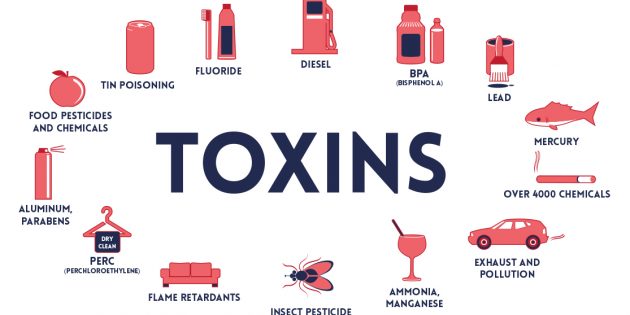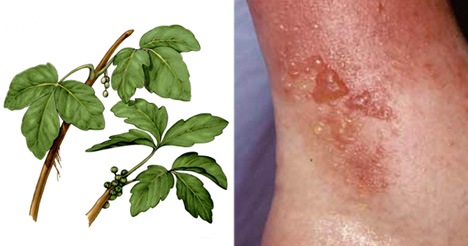We live in a chemical world. Over 50,000 chemicals have been incorporated into daily use since World War II, many of them found in the products we use every day to clean and embellish our bodies and our homes. Some of these chemicals are connected to cancer; others may upset the delicate endocrine system; and others may compromise our immune system or our central nervous system.
Poisons and toxins are substances that can be deadly. They are chemicals, either man-made or naturally produced. We know that everything is made from chemicals, so are all chemicals poisons? Actually, it depends on a number of things – most notably the quantity of the substance absorbed, inhaled or consumed.
Over 400 years ago, Swiss alchemist and physician Paracelsus (1493–1541) said: “All substances are poisons; there is none that is not a poison. The right dose differentiates a poison from a remedy.”
The belief that the dose makes the poison is paramount. It means that all chemicals, from whatever source – human manufacture or natural – are possibly toxic at some dose. This fundamental notion lies beneath toxicology and is crucial to the evaluation of risk from chemicals and their safe use. It is the amount of the substance that causes it to be toxic, not the substance itself.
Some people associate the word ‘chemical’ with manufactured poisons. However, a chemical is not harmful just because it’s manufactured nor is it harmless just because it’s natural.
Potentially poisonous chemicals can be artificial (manufactured) or natural. For instance, dioxins, some pesticides and nerve gases are poisonous manufactured chemicals, whereas, belladonna, botulinum and tetrodotoxin are poisonous naturally produced chemicals. There are also poisonous substances that occur naturally in the ground, such as asbestos and lead.
Poison ivy. Just hearing those words makes some people start itching. Poison ivy contains a toxin that causes severe reactions in many people, so we tend to avoid of it. Now think of doing your laundry. You probably use detergent in the wash to get your clothes clean, right? You may not put poison ivy and laundry soap in the same category, but environmental toxicologists do.
Toxicology is the science of poisons. It is the study of damaging effects of chemicals on living organisms. They study toxicants, which are toxic substances in the environment.
What Are Toxins?
The language surrounding what toxins are is purposely unclear. The Merriam-Webster toxin definition states:
“A toxin is a poisonous substance that is a specific product of the metabolic activities of a living organism and is usually very unstable, notably toxic when introduced into the tissues, and typically capable of inducing antibody formation.”
Toxins, that mean poisons in Greek, are complex compounds of organic and inorganic origin, capable when ingested to cause disease or death. The term was first used by organic chemist Ludwig Brieger. 
Toxins are dangerous agents found in the environment. They can be small molecules , peptides, or proteins that are capable of instigating disease on contact with or absorption by body tissues interacting with biological macromolecules such as enzymes or cellular receptors. These substances can be made by living cells, organisms, plants, fungi, animals, elements, and metals that are capable of causing disease when introduced into the body tissues. However, when used non-technically, the term "toxin" is frequently applied to any poisonous substance.
In broad terms, a toxin can be anything that not only has no nutritional or other value to the body, but actually causes harm or costs the body valuable energy and resources just to get rid of it or store it in the tissues.
Simply put, a toxin is harmful matter. The reason for this confusing language is due to the many types of toxins, all with different and potentially detrimental effects.
Toxins in nature have two primary functions:
- Predation – killing a potential meal (for example, spiders, jellyfish, wasps and sea anemones).
- Defense – discouraging the predator (for example, honey bees, ants and monarch butterflies, and plants such as broccoli produce a toxin to discourage insects from eating them).
What Are Antidotes?
Antidote, antitoxin or antibody formed in the body by the introduction of a bacterial poison, or toxin, and capable of nullifying the toxin. People who have recuperated from bacterial illnesses often cultivate specific antitoxins that confer immunity against relapse.
For medical use in treating human infectious diseases, antitoxins are produced by injecting an animal with toxin; the animal, most commonly a horse, is given repeated small doses of toxin until a high concentration of the antitoxin builds up in the blood.
Antidotes or cures for particular toxins are produced using the toxin itself. Small doses of the toxin are injected into an animal to stimulate the animal’s immune system to produce antibodies to destroy the toxin. The serum containing the antibodies is collected from the animal’s blood, and this serum with the antibodies becomes the antidote for that particular toxin. Nevertheless, some toxins have no known antidote.
Factors Affecting Toxicity
When organisms are exposed to toxins the effect of that toxin on that organism is known as toxicity. Toxicity is the degree to which a substance can hurt an organism, a tissue or a cell. Toxicity may be affected by a number of factors:
- Dosage – the amount of substance taken
- Dose-time relationship. This is the combination of how much and how often. For example, exposure might be to a large dose of a substance, but it might occur once or it may be in small quantities but over a long period of time.
- Exposure – repeated exposure over time leads to toxicity, for example, lead poisoning.
- Exposure route – whether inhaled, ingested or absorbed through the skin.
- The species of animal being affected.
- Sex/gender, size and age of the affected animal or human
- Chemical activity within the organism
- The ability of a substance to be absorbed, distributed, metabolized and finally excreted from the body.
- The presence of other substances, for example, alcohol.
Types Of Toxicity…
There are three types of toxicity depending on how fast and dramatically they affect the body:
- Acute Toxicity that is defined as toxicity caused due to short-term exposure to a toxicant. Incidences of acute toxicity in the environment are commonly associated with accident (e.g., derailment of a train resulting in leakage of a chemical into a river
- Mild /Sub-chronic Toxicity that is defined as toxicity elicited as a result of long-term exposure to a toxicant. Sub-chronic toxicity is the ability of a toxic substance to cause effects for more than one year but less than the lifetime of the exposed organism.
- Chronic toxicity is the ability of a substance or mixture of substances to cause injurious effects over a prolonged period, usually upon repeated or continuous exposure, sometimes lasting for the entire life of the exposed organism. Sub-lethal end points are generally associated with chronic toxicity. These include reproductive, immune, endocrine, and developmental dysfunction. However, chronic exposure can also be an outcome of direct mortality not detected during acute exposure!!
Recognizing less toxic products among the thousands of merchandises lining the shelves of grocery stores, pharmacies and health food stores, garden centers and home improvement stores can be tough.
Toxicity may be related to many health concerns.
Proper assessment is important to optimize your health.
You can use this QUESTIONNAIRE
You may also like:
What Are The Signs And Symptoms Of Toxicity?
12 Health Benefits Of Detoxing The Body







